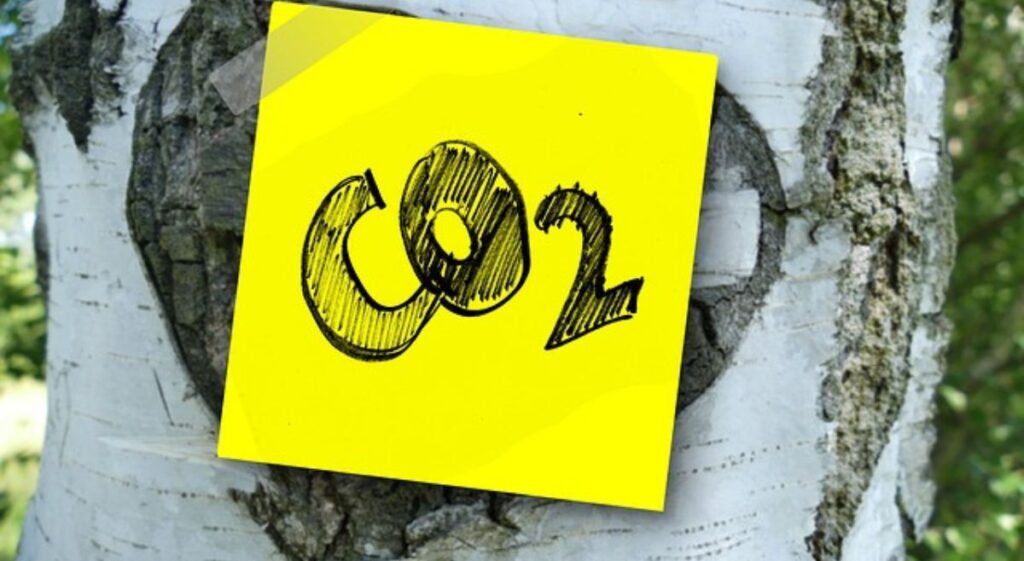Introduction:-
Grow to Protect: The Essential Role of Gardens in Carbon Sequestration and Climate Mitigation

In the worldwide battle against climate change, every action, no matter how small, contributes to the cause. While extensive initiatives and policies often dominate the conversation, the potential of individual efforts, particularly through gardening, is frequently overlooked. Your garden, regardless of its size, can play a vital role in mitigating climate change. One of the most impactful ways it does this is through carbon sequestration. But what exactly is carbon sequestration, and how can your garden help in this critical process?
Understanding Carbon Sequestration and Climate Mitigation
Carbon sequestration, a crucial natural process, involves capturing and storing carbon dioxide (CO2) from the atmosphere in soil, plants, and trees. This process is vital for regulating Earth’s temperature and reducing greenhouse gas concentrations in the atmosphere. While forests, wetlands, and oceans are recognized as significant carbon sinks, even small-scale efforts like backyard gardening can contribute to this global initiative.
How Gardens Help in Carbon Sequestration
- Plant Growth and CO2 Absorption:
- Plants serve as natural carbon sinks, absorbing CO2 during photosynthesis and converting it into oxygen and glucose. The carbon from CO2 becomes stored in plant tissues like leaves, stems, and roots. Increasing the diversity and quantity of plants in your garden enhances its capacity to absorb and retain carbon.
- Soil Health and Carbon Storage:
- Healthy soil is a significant reservoir for carbon sequestration. Organic matter, including compost and mulch, enhances soil structure, raises its carbon content, and improves moisture retention. Practices such as no-till gardening and cover cropping further contribute to increased soil carbon storage.
- Trees and Long-Term Carbon Storage:
- Trees stand as some of the most effective carbon storage systems, sequestering carbon in their biomass for extended periods, often spanning decades or even centuries. Planting trees in your garden offers multiple benefits, including providing shade, beautifying your landscape, and contributing to long-term carbon sequestration.
- Reducing Carbon Footprint with Sustainable Gardening Practices:
- Sustainable gardening practices play a crucial role in minimizing your garden’s carbon footprint. These practices include using hand tools over gas-powered equipment, conserving water, and composting kitchen waste. By adopting these eco-friendly approaches, you reduce CO2 emissions released into the atmosphere, further amplifying your garden’s contribution to climate change mitigation.
Maximizing Carbon Sequestration in Your Garden
Tips to Maximize Your Garden’s Carbon Sequestration Potential:
- Diverse Plant Selection:
- Plant a variety of species including trees, shrubs, perennials, and cover crops. This promotes a resilient ecosystem, enhancing carbon storage in different plant tissues and soil layers.
- Soil Management:
- Focus on improving soil health by incorporating organic matter, minimizing disturbance, and protecting the surface with mulch. Healthy soil stores more carbon and supports vigorous plant growth.
- Composting:
- Composting organic waste reduces methane emissions from landfills and enriches the soil, increasing carbon storage.
- Water Conservation:
- Implement water-wise practices like rainwater harvesting, drip irrigation, and selecting drought-tolerant plants. This not only reduces energy consumption but also maintains soil health.
- Native and Perennial Plants:
- Native plants and perennials are well-adapted to local conditions, requiring less maintenance. Their deep root systems store more carbon and improve soil structure.
What are the benefits of composting for carbon sequestration?
Composting plays a crucial role in sequestering carbon and offers numerous environmental benefits.

1. Carbon Storage:
Composting organic waste stabilizes carbon in the soil, transforming it into a long-term storage form. This prevents the release of carbon dioxide (CO2), a significant greenhouse gas, into the atmosphere.
2. Enhanced Soil Health:
Compost enriches soil with organic matter, improving its ability to retain moisture and nutrients. Healthy soils not only store more carbon but also contribute to the overall carbon sequestration process.
3. Reduced Methane Emissions:
In the absence of oxygen, organic waste decomposes in landfills, releasing methane, a potent greenhouse gas. By composting in an aerobic environment, methane production is minimized, mitigating greenhouse gas emissions.
4. Promoting Plant Growth:
Compost provides essential nutrients that enhance plant growth. Healthy and robust plants absorb more CO2 from the atmosphere, further aiding in carbon sequestration.
5. Erosion Prevention:
Compost improves soil structure, reducing erosion. Erosion can release stored carbon back into the atmosphere, so preventing it helps maintain carbon sequestration.
6. Sustainable Waste Management:
Composting diverts organic waste from landfills, reducing the carbon footprint associated with waste disposal. This sustainable approach supports global efforts to combat climate change.
In essence, composting contributes to carbon sequestration by storing carbon in the soil, reducing methane emissions, supporting plant growth, and promoting sustainable waste management practices.
*How does urban gardening contribute to climate change mitigation?
Urban gardening is a powerful tool for climate change mitigation. Here’s how:

- Carbon Sequestration: Plants in urban gardens absorb carbon dioxide from the atmosphere and store it in their biomass and the soil. This process helps reduce atmospheric carbon levels, contributing to climate change mitigation.
- Temperature Regulation: Urban gardens provide shade and release moisture through transpiration, which helps cool cities. This reduces the urban heat island effect, lowering energy demand for cooling and mitigating climate change.
- Reduced Greenhouse Gas Emissions: Growing food locally reduces the need for transportation and packaging, which are major sources of greenhouse gas emissions. Urban gardening also encourages the use of sustainable farming practices, further reducing greenhouse gas emissions.
- Improved Air Quality: Plants in urban gardens filter pollutants from the air, including carbon dioxide, helping to improve air quality. This reduces the concentration of greenhouse gases in the atmosphere.
- Promotion of Sustainable Lifestyles: Urban gardening promotes sustainable living practices, such as composting, reducing chemical fertilizer and pesticide use, and encouraging water conservation. These practices lower the carbon footprint of individuals and communities.
- Biodiversity Enhancement: Urban gardens create habitats for pollinators and other wildlife, supporting biodiversity in urban areas. Healthy ecosystems are more resilient to climate change and can better sequester carbon.
In summary, urban gardening offers a range of climate change mitigation benefits, including carbon sequestration, temperature regulation, reduced greenhouse gas emissions, improved air quality, promotion of sustainable lifestyles, and biodiversity enhancement.
Conclusion
In the fight against climate change, your garden holds immense power beyond its aesthetic appeal and tranquil ambiance. By recognizing and fostering its role in carbon sequestration, you make a profound impact on the health of the planet and contribute to a future rooted in sustainability. Every plant, tree, and patch of healthy soil plays a vital role in mitigating climate change on a global scale. Embrace the responsibility of “growing to protect,” for your garden is a sanctuary of resilience, nurturing a greener and more sustainable tomorrow.
References
- EPA: Carbon sequestration in different ecosystems, including gardens.
- RHS: Gardening’s impact on climate change, focusing on sustainable practices and plants’ role in carbon sequestration.
- Nature Conservancy: Natural landscapes like gardens contribute to carbon storage and climate change mitigation.
- Union of Concerned Scientists: Trees, including urban garden trees, play a significant role in capturing and storing carbon dioxide.
- National Geographic: Tree planting as a method to combat climate change, highlighting urban gardens’ importance.
FAQs
Q1: How does urban gardening help reduce greenhouse gas emissions?
A1: Urban gardening reduces greenhouse gas emissions by lowering the need for food transportation, packaging, and industrial agriculture. It also promotes the use of organic practices, which minimize the release of harmful gases like CO2 and methane.
Q2: Can urban gardens really make a difference in fighting climate change?
A2: Yes, while each individual garden may seem small, collectively, urban gardens can significantly impact climate change by sequestering carbon, reducing the urban heat island effect, and promoting sustainable living practices.
Q3: What role do urban gardens play in carbon sequestration?
A3: Urban gardens help sequester carbon by growing plants that absorb CO2 from the atmosphere and store it in their biomass and soil. This process helps reduce the overall concentration of greenhouse gases.
